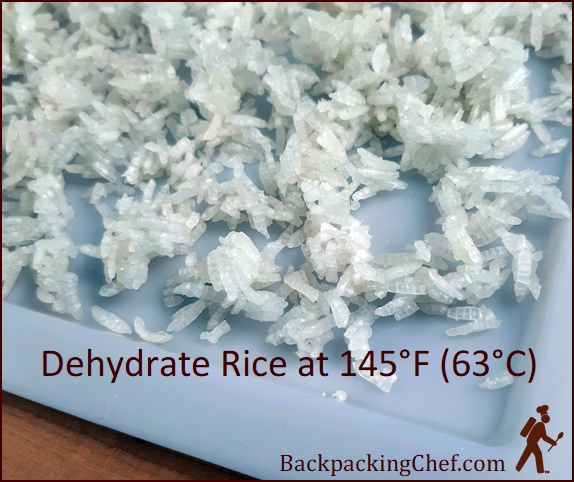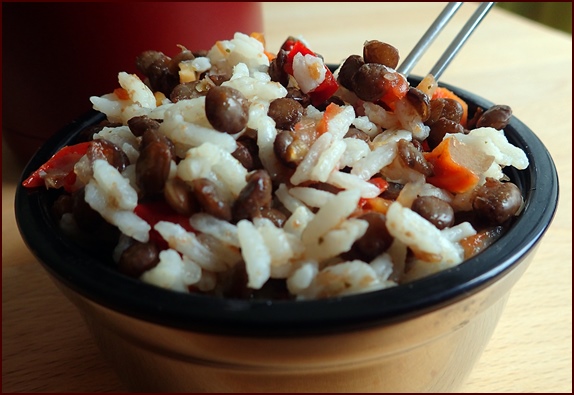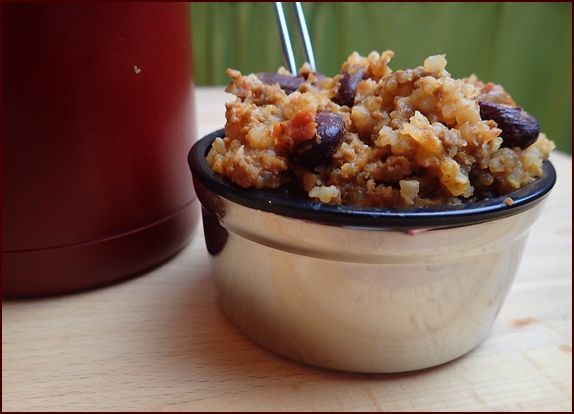| Back to Back Issues Page |
 |
|
Trail Bytes: Safety Update for Dehydrating Rice June 24, 2023 |
| Hello, Do you know the difference between bacterium and bacteria? The former designates a party of one, and the latter refers to a whole party, sometimes behaving badly. Bacterial names are always italicized, something else I learned from Dr. Donald Schaffner, Ph.D., Distinguished Professor and Extension Specialist in Food Science, Rutgers University. The spore-forming bacterium that I requested a consultation with Dr. Schaffner about goes by the name, Bacillus cereus. While not as famous as E. coli and salmonella for turning over chairs and tables in gastrointestinal tracts, Bacillus cereus recently made the news in an article in bon appétit:
Does this mean we should stop dehydrating cooked rice? No. Just raise the temperature above the range where Bacillus cereus can grow. The US FDA recommends that food service operations keep hot foods, such as cooked rice, above 135°F (57°C) during the holding period between cooking and serving. According to the FDA, “the temperature range between 135°F (57°C) and 41°F (5°C) is known as the danger zone for food storage and should be avoided.” Dr. Schaffner concurred that the minimum temperature for dehydrating rice should be above 135°F (57°C). But, I thought, let’s raise the temperature to 145°F (63°C), and we’ll stop those party-crashing bacteria at the curb, rather than at the front door. I dehydrated lots of rice at 145°F (63°C) since speaking with Dr. Schaffner. It dries just fine, and faster, than drying it at lower temperatures. Three cups of cooked rice on one Cosori dehydrator tray dried in four hours. The rice rehydrated well in several backpacking meals that I prepared with lentils and chili.
All Backpacking Chef webpages, e-books, and print books have been updated to the new temperature. Please read the complete safety update, which includes official references and my own list of best practices for dehydrating and rehydrating rice. There’s also a recommendation to limit the rehydration time for cold-soak rice salads to under two hours.
New Recipes:
This new page features a method for cooking onions and vegetables without oil. Enjoy this green lentil & vegetable stew by itself, or combine it with rice in a hot or cold-soak meal.
Meat and meatless chili recipes that you can use to make chili & rice. I love backpacking meals with rice. Here's a page with some of my favorites: That’s it for June. Initial tests of the Cosori dehydrator are all favorable. I hope to finish a complete review next month, and maybe I’ll get to those potatoes! See you soon in the next issue of Trail Bytes. Freundliche Grüsse,
Chef Glenn & Dominique Reply to this email with any questions or comments, or use this contact form.
Visit my Backpacking Chef Facebook page for the lastest posts. Be sure to "follow" the page to continue seeing posts.
If you received this newsletter from a friend and would like to subscribe (it's free), subscribe here.
|
| Back to Back Issues Page |




